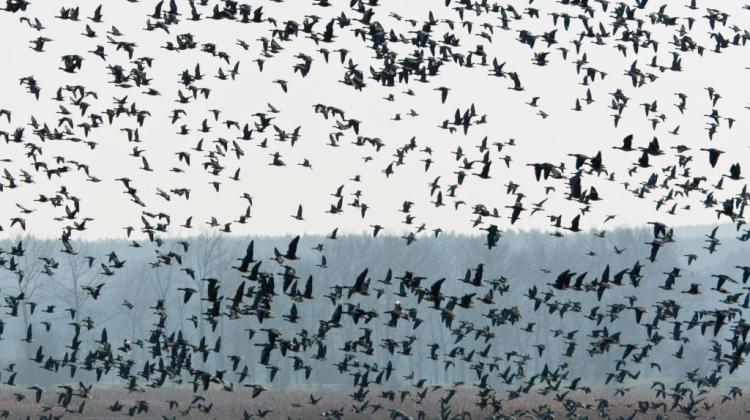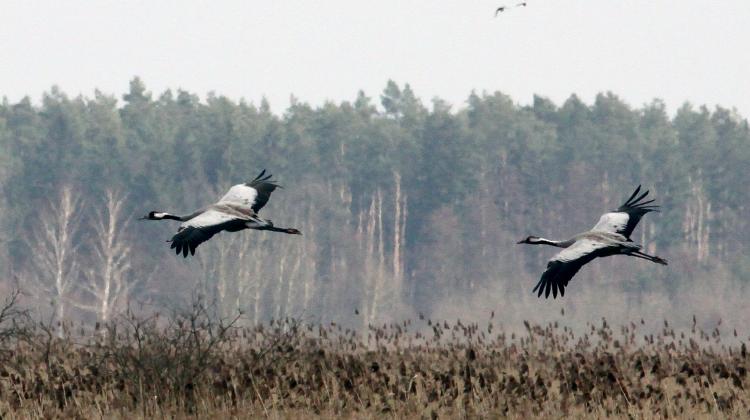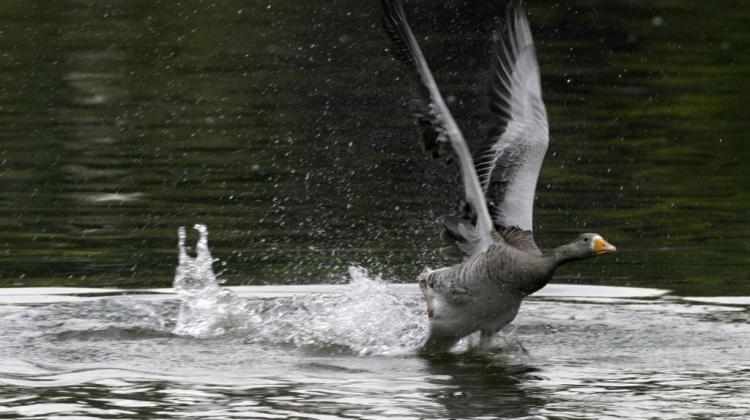Winter is coming, geese and cranes fly away from the Warta River Mouth

With the advent of frost, most of the birds flew away from the Warta River Mouth National Park (Lubuskie). The number of geese decreased from 66 thousand in early November to 26 thousand. Naturalists counted only 27 cranes this week; in September there were over 14.5 thousand of them.
"You can see that the lower temperatures forced most of the migratory birds to continue their journey to the west and south of the continent. It is not a typical winter weather yet, but migratory birds instinctively embark. If the current late autumn weather remains for a longer period, their numbers may increase again, especially northern geese" - told PAP Michał Leszczynski from the Warta River Mouth National Park.
Departing geese and cranes will be replaced in the Warta River Mouth by whooper swans, for which this national park is the largest wintering ground in Poland. Their numbers in the park reach 3 thousand birds (that many were seen there last winter).
"Some of these swans fly to their feeding grounds in the morning, and then we can hear their distinctive call resembling a car horn, intertwined with gaggle of geese" - said Leszczyński.
Whooper swans are similar in size to common in our country mute swans. These birds are easily distinguishable, not only by their sounds, but also the beak colour. Mute swans have orange beaks, whooper swans have a yellow and black bill pattern.
Whooper swans spend most of the year in more northerly areas.
In addition whooper swans, on the Warta River backwaters at this time of the year there are also small goosander groups, preying on the fish accumulating in the channels.
Warta River Mouth National Park, established in 2001, covers an area of 8074 ha. It is located near the western Polish border, in the part of the Toruń-Eberswalde glacial valley called the Gorzów Basin.
Naturalists have observed over 270 species of birds in the park, of which more than 170 species have been breeding. A dozen of them are listed in the Polish Red Book of Animals.
This is one of the most important in Central Europe rest areas for geese and other migratory birds during their periodic, autumn and spring migration.
PAP - Science and Scholarship in Poland
mmd/ mrt/
tr. RL
Przed dodaniem komentarza prosimy o zapoznanie z Regulaminem forum serwisu Nauka w Polsce.

















